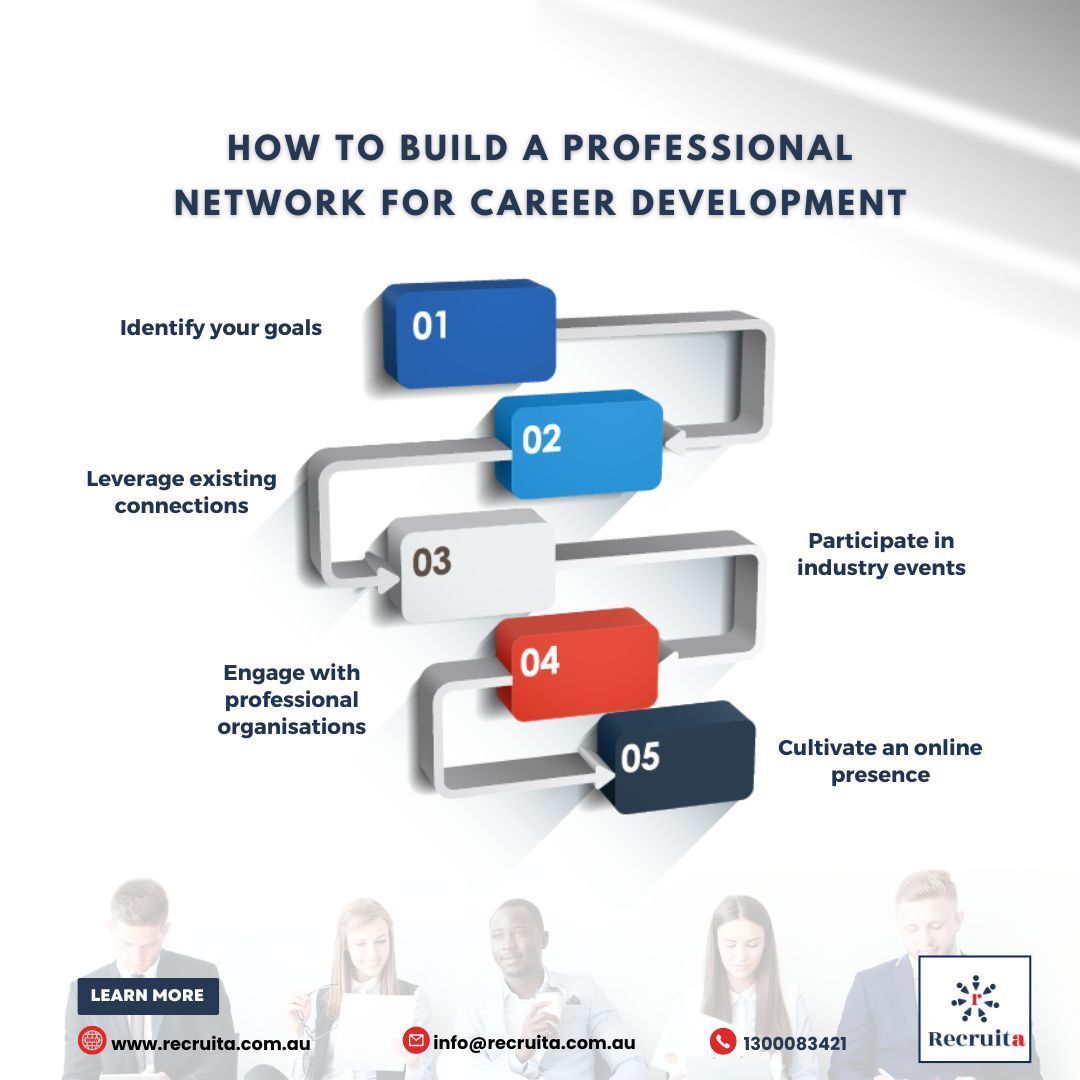How To Strategize Your Job Search
When you’re hunting for a new job, the biggest challenges are always knowing where to start, how to get organized, and figuring out the most effective way to approach your job search. In this article, I share a helpful structure and approach that can maximize your ability to land the right new job.
Identify your job goals—and share them with your network
Start by thinking critically about what you are searching for in your next position, and create a document outlining what is most important to you. Here are the key elements:
- Outline a list of the job titles, industries, and companies you are targeting.
- Identify what is important to you in your next role.
PROMOTED
- List your must-haves: are they location, industry, salary, health insurance, flexible PTO?
- Identify those things you would be willing to forgo, understanding that in such a competitive market, there will likely be things you have to compromise on.
Once this document is complete, share it widely with your network. Send it in an email to close friends, family members, former coworkers, and anyone else who may be willing to help you with your job search. People can’t help you if they don’t have a clear understanding of what you’re looking for. Ask if they know of any companies that match this description and find out if they’re hiring—or, most important, if they can make a referral.
See the resource section at the end of this article for an example of a “Job Search Goals” list, written for an event planning job.
Organizing your job search
The key to an effective job search is building a sustainable schedule in which you balance searching for a job with self-care so you don’t go completely crazy and burn yourself out. Staying organized is essential to this process.
- Start by creating your own version of this sample Job Search Spreadsheet.
- Use this document to keep track of roles you’re interested in, if you’ve been referred, whom it is you’re talking to at each place, if you have any pending action items, etc. Being able to quickly see the progress you’ve made for each job in a single spreadsheet is much more efficient than trying to find information buried in many different email messages.
- Another tool I’ve created is a template for a Job Search Weekly Plan, which includes a balance of searching for jobs in online job boards with different, but equally important job-search tactics such as talking to friends and acquaintances about possible job opportunities, professional networking, etc.
- Once you’ve got a plan in place, create weekly recurring calendar events at specific times to make sure you’re staying on track—and stick to it! Here is a sample Google Calendar to customize.
- Make it a weekly goal to have live conversations with people about your job search. Reach out to people in your network and outside of your network for advice as well as to find out where they are connected and how they might be able to help.
- Prepare for interviews even when you don’t have one scheduled, especially if you have to go through technical interviews. It takes the pressure off if you get an interview scheduled with a quick turnaround. Write out answers to possible interview questions.
- Conduct mock interviews, record them, and listen to how you answered so you can figure out where you can improve.
Finding and applying for the jobs you want
The old method of finding jobs online and clicking the “apply” button is often very unsuccessful. Looking at LinkedIn and seeing hundreds of people applying to a single role can be very discouraging. Whenever possible, leverage your own network for referrals.
- Start by using Google’s job search tool to find the jobs you want to apply for. Google will pull results from all the job boards on the internet. To look up job postings, for example, type in “Events Manager Jobs in San Francisco” and it will curate postings from LinkedIn, Glassdoor, Indeed, etc.
- Once you find a job you want to apply for, this is where the networking comes in. Use LinkedIn to find connections. Look up the company name on LinkedIn, click on “See all X number of employees that work here,” and filter results by your 1st- and 2nd-degree connections. You need LinkedIn Premium to do this, because without it, only the first few people at the company will be shown and you’ll get a message saying, “You need to upgrade to premium to view the rest.”
- If you have any 1st- or 2nd-degree connections at the company, it’s best to start there. See the next section of this article on how to request introductions.
- Another great tip for your job search is to leverage groups like Albert’s List on Facebook, both for referrals, but also for helping you get connected to a Job Search Mentor.
Asking for an introduction to a company connection
It is very important to get a warm personal introduction to someone at the company you are interested in. Here are some general guidelines when seeking an introduction:
- Send an email to your contact requesting an introduction, and always include a link to the job description.
- Wait until they reply before you send a resume (unless it’s someone you know well and are certain their answer will be yes).
- If it’s a job you really want, don’t wait! It’s okay to ask more than one person for an introduction and go with whoever answers first.
Of course, it goes without saying, you should always be willing to return the favor in the future.
Sample message if it’s someone you know personally
If you have any 1st-degree connections on LinkedIn, contact them and ask them to refer you to the job. Sample message:
Jim, I’m interested in applying to the [insert job title and link to job posting] role I saw listed at [insert company name]. Would you be willing to refer me for this position? I can send along my resume. I’ve included a brief note about myself and my expertise you can forward along as needed. Thanks!
Sample message if a 2nd-degree connection works at the company
Start by reaching out to YOUR connection for an introduction to their connection, as this is typically more effective. Sample message:
Hey Tina, how well do you know [2nd-degree connection name] over at [company name]? I see a job posting there I am interested in applying to, and I’m wondering if you know her/him well enough that you’d be willing to make an introduction or pass along my resume.
When you have 2nd-degree connections but don’t know your connections well enough, here is what you can say. Sample message:
Hi, Molly. I came across your profile as I was looking at a job posting for [job title and link] at [company name]. I noticed we have many connections to people I attended school with, so I thought I’d reach out and see if you’d be willing to chat about the company and maybe pass along my resume as well. Thanks so much!
Sample message if you don’t have any connections to the company
If you don’t have any connections to the company at all, use LinkedIn to see who works at the company. Click on as many people as possible and read through their biographies and job titles. Aim for folks that are on a similar career level or only slightly more senior. Senior level folks are busy and less likely to answer. If they “view” you back on LinkedIn, it opens up doors to a conversation. Always send a LinkedIn inmail, and don’t request a connection without an explanation. Sample message:
Hi Robert, I came across your profile as I was looking at a job posting for [job title and link] at [company name]. I am particularly interested in [company name] and would love the opportunity to chat with someone who works there and learn more about the product and culture. It seems like it’s a great fit for my skills and background and what I’m looking to do. Any chance you might be willing to chat and perhaps even pass along a resume for me? Hope you are doing well. Appreciate it.
APPENDIX OF HELPFUL RESOURCES
Give your friends, family, and network the tools to help you with your job search by clearly outlining what you are seeking. These are just examples of what the parameters were for me when I was job searching:
Job titles
- Event Manager
- Community & Events Manager
- Sr. Events Specialist
- Event Marketing Manager
- Field Marketing Manager
- Corporate Events Manager
- Event Coordinator
Industries
- Tech/software companies
Potential target companies
- Databricks
- Square
- Sendoso
- Salesforce
Company details:
- Companies over 100 employees in size
- Decent amount of funding
- Diverse executive team (women and people of color in leadership)
Target needs from job:
- Local to San Francisco office
- Flexibility to work remote sometimes
- Reasonable salary expectations
- Good healthcare and parental leave policies
Create your own version of the Job Search Spreadsheet sample that I’ve created. Use this spreadsheet to track the different jobs and the current stages as well as action items in your interview process. Look at this daily so you can keep track of whom you need to follow up with and what your action items for the day are. This is especially helpful for keeping track of the names of different people in the process—who referred you, who the recruiter is, the name of the hiring manager, etc.
Sample job search spreadsheet© LESLIE KING
Browsing jobs (60 min. every other day)
- Browse jobs using Google’s search function.
- Add jobs to your “Job Search Spreadsheet.”
- Check jobs on Albert’s List on Facebook.
- Use LinkedIn to look up who you know there, and message those people for an intro.
Company searching (60 min. every other day)
- Make a list of companies your friends work at or have other close connections to.
- Visit the company website and see what open jobs they have, and add them to your list if you want to apply.
- Read about companies and make a list of ones you are most interested in:
Applying for jobs (on demand)
- Adjust resume to match positions
- Write cover letters
- Submit applications online (last resort)
Networking (30 min., 2x per week)
- GOAL: Connect with 2 people per week (1 friend + 1 stranger)
- Reach out to friends to talk about jobs/their company 30 min. per week.
- Reach out to people on LinkedIn that are in your field at companies you are interested in.
Check in with your accountability buddy (weekly or every other week)
- Assign someone to help keep you accountable. Check in with a friend once a week for 30 minutes and go over what you’ve done the last few weeks for your job search.
Interview prep/interviewing (60 min. per week, even when an interview is not scheduled)
- Have a friend conduct a mock interview.
- Prepare answers to all the most commonly asked questions, especially “Tell me about your background,” “What makes you want to work for this company?” and “Tell me about a time when …”
- Research the company thoroughly. Review each page of the company’s website (including customer case studies), Glassdoor, LinkedIn company page, and TechCrunch; do a Google search on the company; watch YouTube videos by the company or its CEO; and try to talk to a customer if you can.
Conclusion
Job searching, especially during a pandemic, can be especially discouraging and disheartening, but hopefully by adapting some of these tools and adding strategy to your search, you can feel like you’re making progress.
Setting small but achievable weekly goals, blocking your time on a calendar to help keep yourself accountable, leveraging your network for introductions and practice interviews, and planning time for personal interests like hobbies or exercise can help you keep the motivation going as you job search and interview.
Having a solid strategy for your job search is important to maximize your success of finding a new job. With the tools and solutions suggested in this article, you will be better prepared to organize that job search. Best of luck!
Source: https://www.forbes.com/sites/allbusiness/2020/11/16/how-to-strategize-your-job-search/?sh=7fd92de539d4



